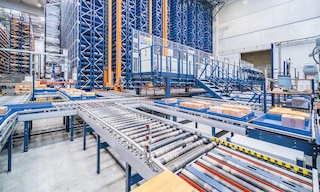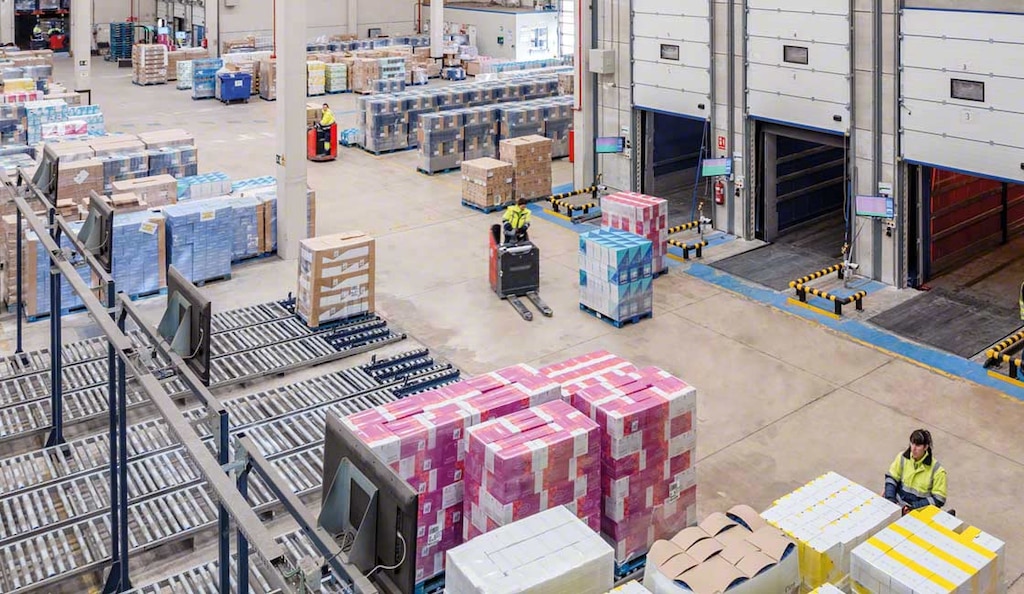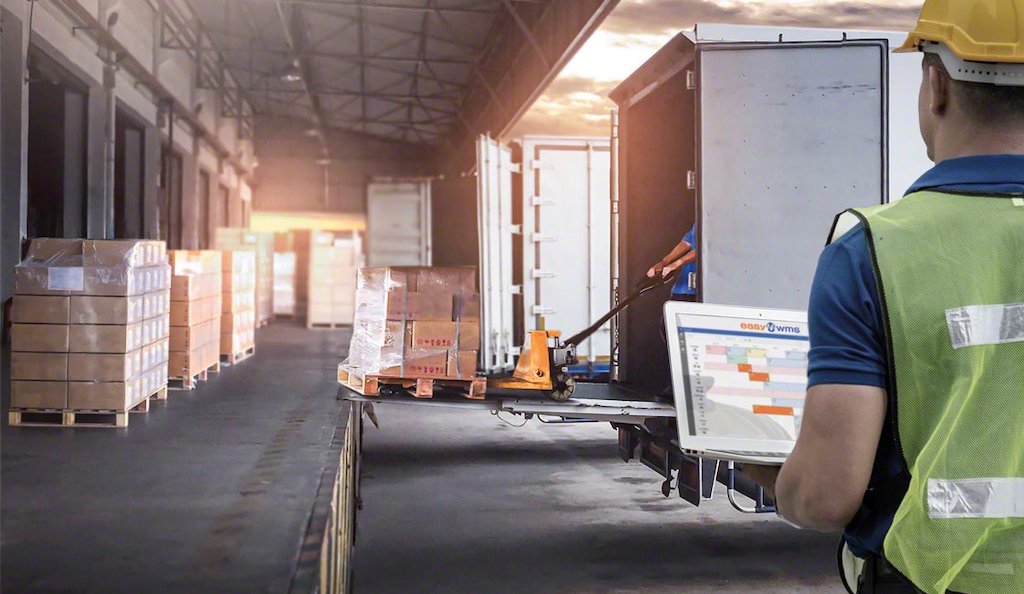
Supply chain: What is it, and how do you design one for your business?
The supply chain covers all the processes required to ensure products reach end customers, from raw material sourcing to delivery. In this post, we explore what a supply chain is, its key components and characteristics, and how to optimize it to improve operational efficiency.
What is a supply chain?
A supply chain is the set of processes, resources, and stakeholders involved in producing and distributing products. It includes all the activities required to turn raw materials into finished goods and deliver them to customers.
An efficient supply chain keeps costs down, enables a quick response to market demands, and enhances customer satisfaction. Core functions include demand planning, inventory management, storage, transportation, and distribution.
What’s the difference between logistics and the supply chain?
Although often used interchangeably, logistics and supply chain are distinct concepts with different scopes and purposes.
Logistics refers to the set of operations carried out to move, store, and distribute goods within a company or between specific points. It comprises activities such as inventory management, order fulfillment, transportation, and last-mile delivery.
The supply chain, on the other hand, has a broader scope. It encompasses all the stages required to manufacture and distribute products — from sourcing raw materials to delivering finished goods to end customers. This includes not only logistics but also demand planning, supplier relations, manufacturing, and reverse logistics (returns, recycling, etc.).
In short, logistics is the part of the supply chain responsible for carrying out day-to-day operations and one of its key links.
What are the stages of the supply chain?
A company’s supply chain is typically broken down into five main stages. Each must be carefully coordinated to avoid supply chain issues.
- Planning: Anticipating demand and organizing the necessary resources.
- Sourcing: Selecting and managing suppliers.
- Production: Converting raw materials into finished goods.
- Distribution: Storing and delivering items to retail locations or end customers.
- Returns: Handling defective or unsold products. This stage is also known as reverse logistics.
Characteristics of an efficient supply chain
While there are different types of supply chains, all should share common traits to run smoothly. These are the most crucial:
- End-to-end. The supply chain covers all processes, from sourcing to final delivery, including reverse logistics.
- Collaborative. All stakeholders — suppliers, manufacturers, logistics providers, distributors, and customers — must work in alignment.
- Interconnected. The supply chain links are tied together by flows — material (products), informational (data), and financial (payments) — that need to be managed in sync.
- Flexible. It must quickly adapt to demand shifts, supply disruptions, or changes in logistics costs.
- Customer-focused. The goal is to deliver the right product, at the right time, at the lowest cost, with the highest level of service.
- Technology-driven. It relies on advanced supply chain solutions — e.g., ERP, TMS, and warehouse management system (WMS) software — to manage processes in real time and support better decision-making.
- Measurable. It’s essential to track and analyze supply chain KPIs such as service level, available inventory, and delivery times.
These elements are critical for building a responsive, high-performing supply chain that meets market demands.

How do companies design their supply chains?
Designing an effective supply chain involves planning and coordinating every element that affects the flow of products, information, and resources. Below are the steps to building a strong supply chain.
- Demand analysis. The first step is to study market behavior, identify customer needs, and forecast sales volumes. This information helps determine the appropriate scale of the supply chain from the start.
- Supplier selection. Reliable suppliers are vital for guaranteeing the timely, cost-effective delivery of raw materials or finished goods that meet quality standards.
- Definition of operational processes. This stage involves designing production, storage, transportation, and distribution processes. It includes setting up logistics flows, routes, stock levels, and replenishment methods.
- Logistics network design. The locations of factories, warehouses, distribution centers, and delivery points are determined. An efficient layout helps reduce costs and transit times.
- Digitalization. Implementing the right software is instrumental for supply chain mapping. ERP (enterprise resource planning), TMS (transportation management system), and WMS software enable real-time flow management and full visibility of operations.
- Communication and collaboration strategy. Establishing clear, open communication channels across all supply chain links allows for fast pivoting to disruptions or demand shifts.
- Management and continuous improvement. Once the supply chain is in motion, it must be monitored using KPIs, with ongoing improvements applied as necessary.
Designing a supply chain isn’t a one-off effort: it should evolve to accommodate changing business needs, new technologies, and market dynamics.

Supply chain examples
Supply chains vary by industry. However, they all share the same goal: to deliver the right product, at the right time, at the lowest possible cost. Below are real-world supply chain examples from different industries, featuring warehouses equipped and managed with Easy WMS software:
Automotive – Continental (Mexico)
In the automotive industry, timing is everything. Continental completed its supply chain optimization project in Mexico by implementing a new automated warehouse designed by Mecalux and overseen by Easy WMS. This solution enables the company to store over 4,000 pallets and prepare up to 170 orders daily, ensuring on-time supplies of components to production lines.
Food – Rica Group (Dominican Republic)
Cold chain integrity is paramount in much of the food supply chain. Rica Group bolstered its supply chain with an automated storage and retrieval system (AS/RS) with a capacity for over 10,000 refrigerated pallets. Mecalux’s solution provides safe, efficient storage of juices and dairy products while consistently maintaining quality.
Pharmaceutical – Intersurgical (Lithuania)
Pharma logistics calls for traceability and control. Intersurgical implemented an automated warehouse in Lithuania to optimize the storage of medical supplies such as masks and respirators. Mecalux’s system streamlines internal flows and ensures high-priority products are available for distribution.
The supply chain: A key factor in competitiveness
The supply chain plays a central role in helping companies stay ahead of the curve. Effective management minimizes costs, optimizes resources, and improves customer service. In a fast-changing global environment, having a well-designed, technology-driven supply chain is more important than ever.
The right logistics solutions can make all the difference in building a successful supply chain. At Interlake Mecalux, we support companies around the world with cutting-edge storage systems, automation, and specialized software. Feel free to explore more success stories and contact us — we’ll design a customized solution for your business.
